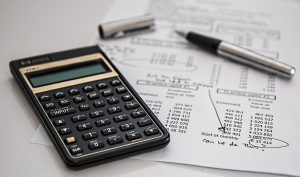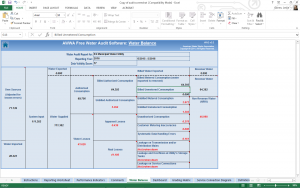Audit. This term scares many. IRS. Fraud. Prison. When it comes to water, however, there is no cause for alarm. In almost every circumstance, the water audit process is relatively pain-free and provides numerous benefits to your water system.
A water audit will provide most systems with the following information: an expected minimum amount of water loss based on system size and operating pressure; identification of areas where information gathering is strong and weak; and the estimates of water loss costs on an annual basis.
With this audit information, utilities will be able to better justify the cost of efforts to decrease water loss in their distribution systems. By estimating the minimum water loss based on system characteristics, water utilities are able to better determine the amount of loss that is potentially recoverable.
For example, a water system that is estimated to lose 10% of its water (even when operated in an optimized manner) finds that it is actually losing 25% of its water. This system may be a good candidate for water leak detection, meter testing, and main replacement. However, if the same utility only found a 13% water loss, there’s likely little-to-no economic justification to attempt to decrease water loss. Additionally, the water audit process separates losses into revenue and non-revenue water – revenue water typically being the water loss which is more financially beneficial to reduce.
Simply enter your name and email address, and you will be emailed a software download link. You, or a member of your staff, can follow the software instructions to perform your system’s water audit. The software is easy to use and utilizes Microsoft Excel. To familiarize yourself with the software, you can view our example of the software with notes on how to read the information.
The water audit process is standardized and straightforward. The American Water Works Association has developed software that is free to use and includes instructions for use. You may download it here.
Once you have the audit software, the water auditor will enter the information necessary for the tool to work. Information required includes system characteristics such as pressure, number of service connections, and meter information. Fundamentally, the water audit process is a mass balance exercise, all water going into a system exits the system somewhere – the water audit process makes sound estimates of where the water is going.
Sometimes the water auditing process will uncover hidden savings. For example, one audit the Wichita State University Environmental Finance Center performed found about $11,000 a year in unused but paid for water, in a system that had a monthly minimum purchase contract but also produced its own water.
Other times, the audit will give little information other than to affirm that things are being managed quite well. One small system our staff audited had very little loss (the system was relatively new) and very good control over its meter data, so no changes to management or infrastructure appeared necessary.
Overall, there is no need to panic when you hear the term “water audit.” In most cases, the water audit process is smooth, and the information provided is always helpful to ensuring a financially sustainable system, now and in the future.
For free assistance performing or evaluating your water audit, contact us via our online assistance request form.


